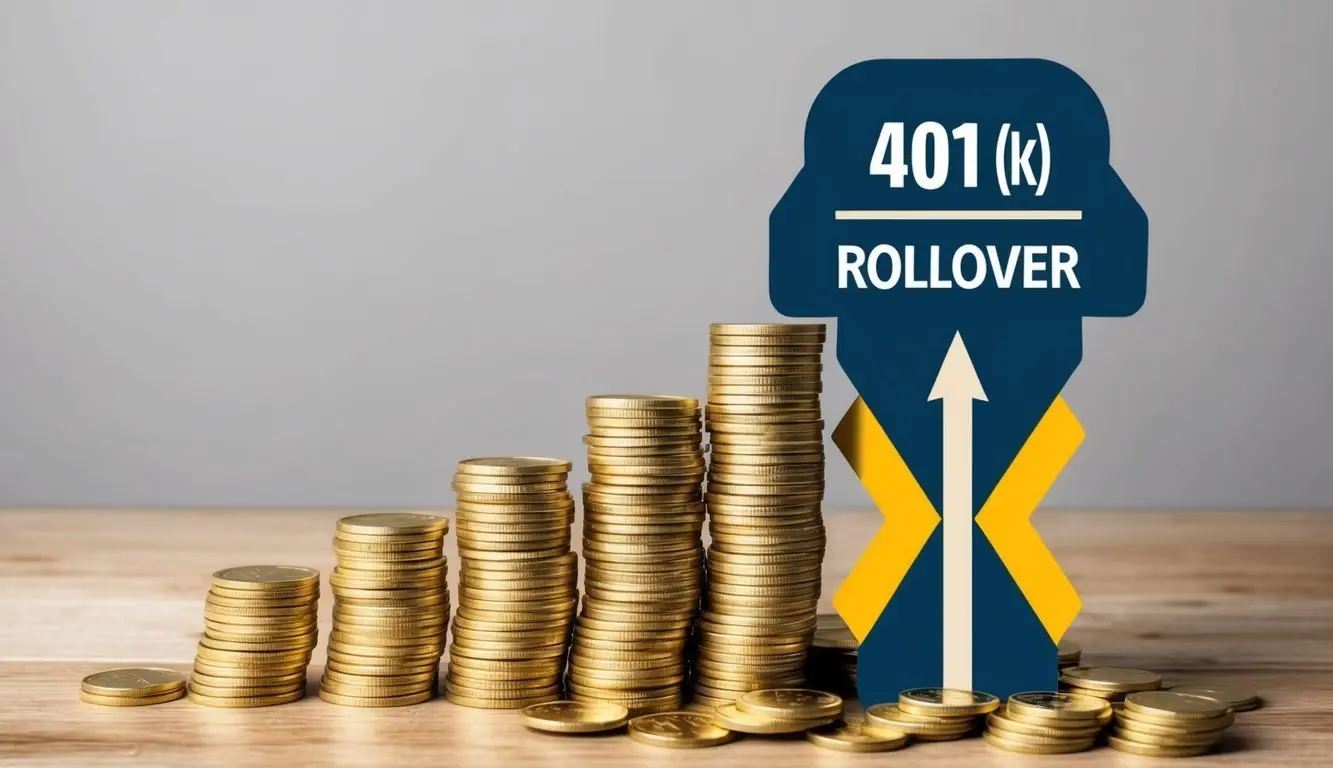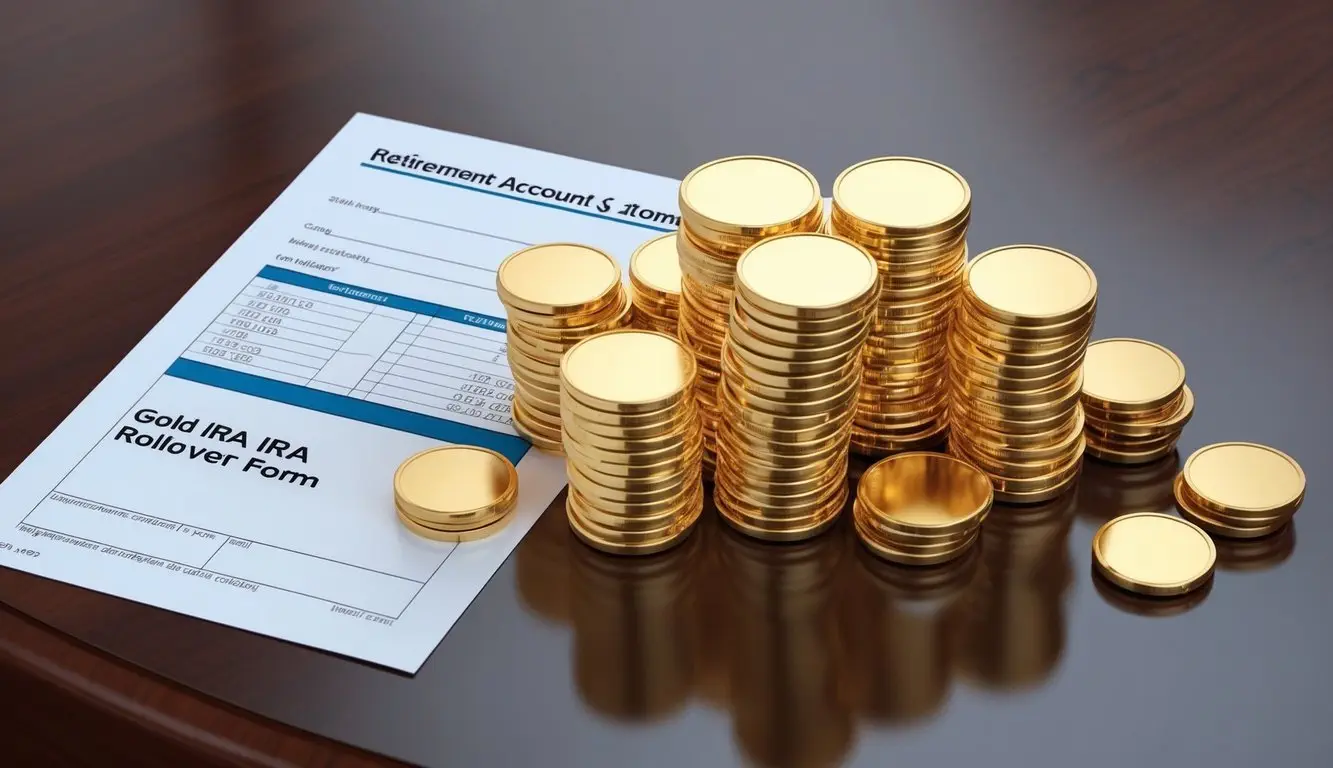A Gold IRA, also known as a precious metals IRA, is a specialized type of Individual Retirement Account that allows investors to hold physical gold and other approved precious metals as part of their retirement portfolio. Unlike traditional IRAs that typically contain paper assets such as stocks, bonds, and mutual funds, a Gold IRA provides the opportunity to diversify retirement savings with tangible assets that have maintained value throughout human history. Chances are you were looking for – 401K Rollover Gold, but you need to know this first.
Gold IRAs operate under the same tax-advantaged structure as conventional IRAs, meaning contributions may be tax-deductible, and the assets grow tax-deferred until withdrawal during retirement. This investment vehicle has gained significant popularity among investors seeking to protect their retirement savings from economic uncertainty, inflation, and market volatility.
The concept of including precious metals in retirement accounts became possible through the Taxpayer Relief Act of 1997, which expanded the types of assets permissible in IRAs. Since then, Gold IRAs have become an increasingly important tool for retirement planning, particularly for those who value portfolio diversification and wealth preservation.
Types of Gold IRAs
Traditional Gold IRA
A Traditional Gold IRA functions similarly to a standard traditional IRA but holds physical precious metals instead of paper assets. Contributions to a Traditional Gold IRA may be tax-deductible depending on your income level and whether you’re covered by an employer-sponsored retirement plan. The assets within the account grow tax-deferred, and you’ll pay ordinary income taxes on distributions taken during retirement. Required Minimum Distributions (RMDs) typically begin at age 73, following current IRS regulations.
Roth Gold IRA
A Roth Gold IRA is funded with after-tax dollars, meaning contributions are not tax-deductible in the year they’re made. However, the significant advantage is that qualified distributions during retirement are completely tax-free, including all growth and appreciation of your precious metals holdings. Roth Gold IRAs do not have required minimum distributions during the account holder’s lifetime, providing greater flexibility in retirement planning.
SEP Gold IRA
A Simplified Employee Pension (SEP) Gold IRA is designed for self-employed individuals and small business owners. SEP IRAs allow for higher contribution limits compared to traditional and Roth IRAs, making them an attractive option for those with higher incomes who want to maximize their retirement savings in precious metals. Employers make contributions on behalf of eligible employees, and these contributions are tax-deductible as a business expense.
Eligible Precious Metals for Gold IRAs
The IRS maintains strict standards regarding which precious metals can be held in a Gold IRA. These requirements ensure that only high-quality, investment-grade metals are included in retirement accounts.
Gold Requirements
Gold products must meet a minimum fineness requirement of .995 purity (99.5% pure). Acceptable gold products include certain bullion bars and coins from approved refiners and government mints. American Gold Eagle coins are an exception to the purity rule and are permitted despite being 91.67% pure due to their status as official U.S. legal tender.
Silver Requirements
Silver must meet a minimum fineness of .999 (99.9% pure). Approved silver products include various bullion bars and coins that meet IRS specifications.
Platinum and Palladium Requirements
Both platinum and palladium must meet a minimum fineness of .9995 (99.95% pure). These metals provide additional diversification options within a precious metals IRA.
Prohibited Items
Collectible coins, rare numismatic coins, and jewelry are generally not permitted in Gold IRAs. The IRS specifically prohibits items valued primarily for their collectibility rather than their precious metal content. Additionally, certain commemorative coins and limited mintage items may not qualify, even if they meet purity standards.
How Gold IRAs Work
The Self-Directed IRA Structure
Gold IRAs are structured as self-directed IRAs, which means the account holder has greater control over investment decisions compared to traditional IRAs managed by financial institutions. While you direct the investments, you’ll still work with several specialized service providers to maintain IRS compliance.
Required Service Providers
Custodian: An IRS-approved custodian must hold legal ownership of the IRA assets on your behalf. The custodian handles all administrative tasks, maintains records, files required reports with the IRS, and ensures compliance with regulations. Not all IRA custodians handle precious metals, so you’ll need to work with one specializing in Gold IRAs.
Dealer: A precious metals dealer sources and sells the gold and other precious metals for your IRA. The dealer should offer IRA-eligible products and work seamlessly with custodians to facilitate purchases.
Depository: IRS regulations require that precious metals in an IRA be stored in an approved depository facility. You cannot store IRA-owned gold at home or in a personal safe deposit box. The depository provides secure, insured storage and maintains detailed records of your holdings.
Funding Your Gold IRA
There are several methods to fund a Gold IRA:
Direct Contributions: You can make annual contributions up to the IRS limit, which adjusts periodically for inflation. These contributions can be made with cash that the custodian then uses to purchase precious metals on your behalf.
Transfers: You can transfer funds from one IRA to another without tax consequences. The money moves directly between custodians without you taking possession of the funds.
Rollovers: You can roll over funds from qualified retirement accounts such as 401(k)s, 403(b)s, or traditional IRAs into a Gold IRA. Rollovers must be completed within 60 days to avoid taxes and penalties, though direct rollovers (trustee-to-trustee transfers) are generally recommended to avoid complications.
Benefits of Gold IRA Investing
Inflation Protection
Gold has historically served as a hedge against inflation. As the purchasing power of currency decreases over time, gold typically maintains or increases its value. During periods of high inflation, gold often outperforms traditional paper assets, helping preserve the real value of retirement savings.
Portfolio Diversification
Modern portfolio theory emphasizes the importance of diversification across different asset classes. Gold and other precious metals often have a low or negative correlation with stocks and bonds, meaning they may perform well when traditional investments struggle. This diversification can reduce overall portfolio volatility and risk.
Economic Uncertainty Protection
During times of economic turmoil, political instability, or financial market stress, gold frequently serves as a “safe haven” asset. Investors flock to gold during crises, often driving up its value when other investments are declining. This characteristic makes gold an important component of a defensive investment strategy.
Tangible Asset Ownership
Unlike stocks or bonds, which represent claims on company assets or debt obligations, gold is a physical asset with intrinsic value. This tangibility provides psychological comfort to many investors who appreciate owning something real rather than paper promises.
Long-Term Value Preservation
Gold has maintained its value across centuries and civilizations. While short-term prices fluctuate, gold’s long-term track record as a store of value is unmatched. This makes it particularly suitable for retirement planning, which requires a long-term perspective.
Tax Advantages
Gold IRAs offer the same tax benefits as traditional retirement accounts. Depending on the type of Gold IRA you choose, you can enjoy tax-deductible contributions, tax-deferred growth, or tax-free distributions in retirement.
401K Rollover Gold – Some Considerations
Costs and Fees
Gold IRAs typically involve higher costs than traditional IRAs. You’ll encounter setup fees, annual custodial fees, storage fees charged by the depository, and transaction fees when buying or selling metals. Additionally, precious metals dealers charge premiums over the spot price of metals. These costs can accumulate over time and impact overall returns.
However, they are totally worth it in the long run if you consider the ROI.
No Passive Income
Unlike dividend-paying stocks or interest-bearing bonds, gold does not generate income while you hold it. The only way to profit from gold is through price appreciation. This means your Gold IRA won’t benefit from the compounding effect of reinvested dividends or interest payments.
Price Volatility
While gold is often viewed as a stable store of value over the long term, short-term prices can be quite volatile. Gold prices are influenced by numerous factors including currency fluctuations, interest rates, geopolitical events, and investor sentiment. This volatility can be unsettling for some investors.
Liquidity Considerations
While gold is generally considered a liquid asset, selling physical gold from an IRA involves more steps than selling stocks or mutual funds. You must coordinate with your custodian and dealer, and the process may take several days. Additionally, you’ll need to find a buyer willing to pay a fair price.
Storage Limitations
IRS regulations prohibit storing IRA-owned gold at home. All precious metals must remain in an approved depository until you take a distribution. This requirement means you cannot directly access or enjoy your gold holdings while they’re in the IRA.
Required Minimum Distributions
For Traditional Gold IRAs, you must begin taking required minimum distributions at age 73. This means you’ll need to either sell some of your precious metals or take physical possession of them (which counts as a taxable distribution). The need to liquidate holdings to satisfy RMDs can be problematic if gold prices are depressed at that time.
Setting Up a Gold IRA: Step-by-Step Process
Step 1: Research and Education
Before opening a Gold IRA, invest time in understanding how these accounts work, the costs involved, and whether they align with your retirement goals. Consider consulting with a financial advisor who understands precious metals investing.
Step 2: Choose a Custodian
Select an IRS-approved custodian that specializes in precious metals IRAs. Compare fee structures, customer service reputations, and the range of services offered. The custodian will be your primary point of contact for account administration.
Step 3: Complete Account Application
Fill out the necessary paperwork to establish your Gold IRA. This process is similar to opening any other IRA and requires personal information, beneficiary designations, and investment objectives.
Step 4: Fund Your Account
Decide how you’ll fund the account-through contributions, transfers, or rollovers. If rolling over funds from an existing retirement account, work closely with both custodians to ensure a smooth, tax-free transfer.
Step 5: Select Your Precious Metals
Once your account is funded, work with your dealer to select IRA-eligible precious metals. Consider diversifying across different types of metals and products to maximize the benefits of precious metals ownership.
Step 6: Complete the Purchase
Your custodian will use funds from your IRA to purchase the selected metals from the dealer. The metals are then shipped directly to the approved depository, where they’ll be stored in your account.
Step 7: Ongoing Management
Monitor your account statements, track the value of your holdings, and rebalance as needed. Stay informed about precious metals markets and consider whether adjustments to your allocation are appropriate as you approach retirement.
Gold IRA Distribution Options
Taking Physical Possession
When you reach retirement age and want to access your Gold IRA assets, you can take physical possession of your precious metals. This counts as a taxable distribution (for Traditional Gold IRAs), and you’ll pay ordinary income taxes on the value of the metals received. The metals will be shipped from the depository to your address.
Selling for Cash
Alternatively, you can instruct your custodian to sell your precious metals and distribute the cash proceeds. This option provides liquidity and may be preferable if you need funds for living expenses rather than physical gold.
In-Kind Distribution
Some investors choose to take partial distributions of physical metals while leaving the remainder in the account. This strategy allows you to enjoy some of your gold holdings while maintaining tax-deferred growth on the balance.
Gold IRA Rules and Regulations
Contribution Limits
Gold IRAs are subject to the same annual contribution limits as traditional IRAs. These limits are adjusted periodically by the IRS to account for inflation. For 2024, individuals under 50 can contribute up to 7,000 annually, while those 50 and older can contribute up to 8,000 with the catch-up contribution.
Prohibited Transactions
The IRS prohibits certain transactions in Gold IRAs to prevent self-dealing and maintain the retirement purpose of these accounts. You cannot:
- Store IRA-owned gold at home or in a personal safe deposit box
- Use IRA gold as collateral for a loan
- Sell personal precious metals to your IRA
- Purchase metals from your IRA for personal use without taking a distribution
Violating these rules can result in the entire IRA being considered distributed, triggering immediate taxes and potential penalties.
Early Withdrawal Penalties
Distributions taken before age 59½ are generally subject to a 10% early withdrawal penalty in addition to ordinary income taxes. Certain exceptions exist, including disability, first-time home purchases (up to $10,000), and qualified education expenses.
Factors Affecting Gold Prices
Understanding what drives gold prices can help you make informed decisions about your Gold IRA investments.
Economic Indicators
Gold prices often respond to economic data such as inflation rates, GDP growth, and employment figures. Weak economic data typically supports gold prices as investors seek safe-haven assets.
Interest Rates
There’s generally an inverse relationship between interest rates and gold prices. When interest rates rise, the opportunity cost of holding non-yielding gold increases, potentially pressuring prices downward. Conversely, low interest rates make gold more attractive.
Currency Fluctuations
Gold is priced in U.S. dollars, so the strength or weakness of the dollar significantly impacts gold prices. A weaker dollar typically supports higher gold prices, while a stronger dollar can pressure prices lower.
Geopolitical Events
Political instability, conflicts, and international tensions often drive investors toward gold as a safe-haven asset, supporting prices during uncertain times.
Supply and Demand
Like any commodity, gold prices are influenced by supply from mining operations and demand from various sectors including jewelry, technology, and investment. Changes in mining output or demand from major consumers like China and India can affect prices.
Is a Gold IRA Right for You?
Ideal Candidates for Gold IRAs
Gold IRAs may be particularly suitable for:
- Investors seeking portfolio diversification beyond traditional stocks and bonds
- Those concerned about inflation eroding retirement savings
- Individuals with a long investment time horizon who can weather short-term volatility
- Investors who have already maximized contributions to other retirement accounts
- Those with a portion of their portfolio they can dedicate to alternative investments without compromising their overall financial security
When a Gold IRA Might Not Be Appropriate
Gold IRAs may not be the best choice for:
- Younger investors who can benefit more from the growth potential of stocks
- Those with limited retirement savings who cannot afford the higher fees
- Investors seeking regular income from their retirement accounts
- Individuals who need maximum liquidity and flexibility
- Those uncomfortable with commodity price volatility
Allocation Considerations
Financial experts generally recommend limiting precious metals to 5-10% of a diversified retirement portfolio. This allocation provides the benefits of gold ownership while maintaining sufficient exposure to growth-oriented assets. Your specific allocation should depend on your age, risk tolerance, retirement timeline, and overall financial situation.
[sspostsincat category=””]
Conclusion
Gold IRAs represent a unique opportunity to diversify retirement portfolios with physical precious metals while maintaining the tax advantages of traditional retirement accounts. These specialized IRAs offer protection against inflation, economic uncertainty, and market volatility, making them an attractive option for many retirement savers.
However, Gold IRAs are not without considerations. Higher fees, lack of passive income, and storage requirements mean they’re not suitable for everyone. The decision to open a Gold IRA should be made carefully, considering your overall financial situation, retirement goals, and investment philosophy.
By understanding how Gold IRAs work, the benefits they offer, and the potential drawbacks, you can make an informed decision about whether including precious metals in your retirement portfolio aligns with your long-term financial objectives. Whether you’re looking to hedge against economic uncertainty, diversify your holdings, or preserve wealth across generations, a Gold IRA may be a valuable component of a comprehensive retirement strategy.
As with any significant financial decision, consider consulting with qualified financial and tax professionals who can provide personalized advice based on your unique circumstances. With proper planning and realistic expectations, a Gold IRA can serve as an important tool in building a secure and diversified retirement portfolio.








